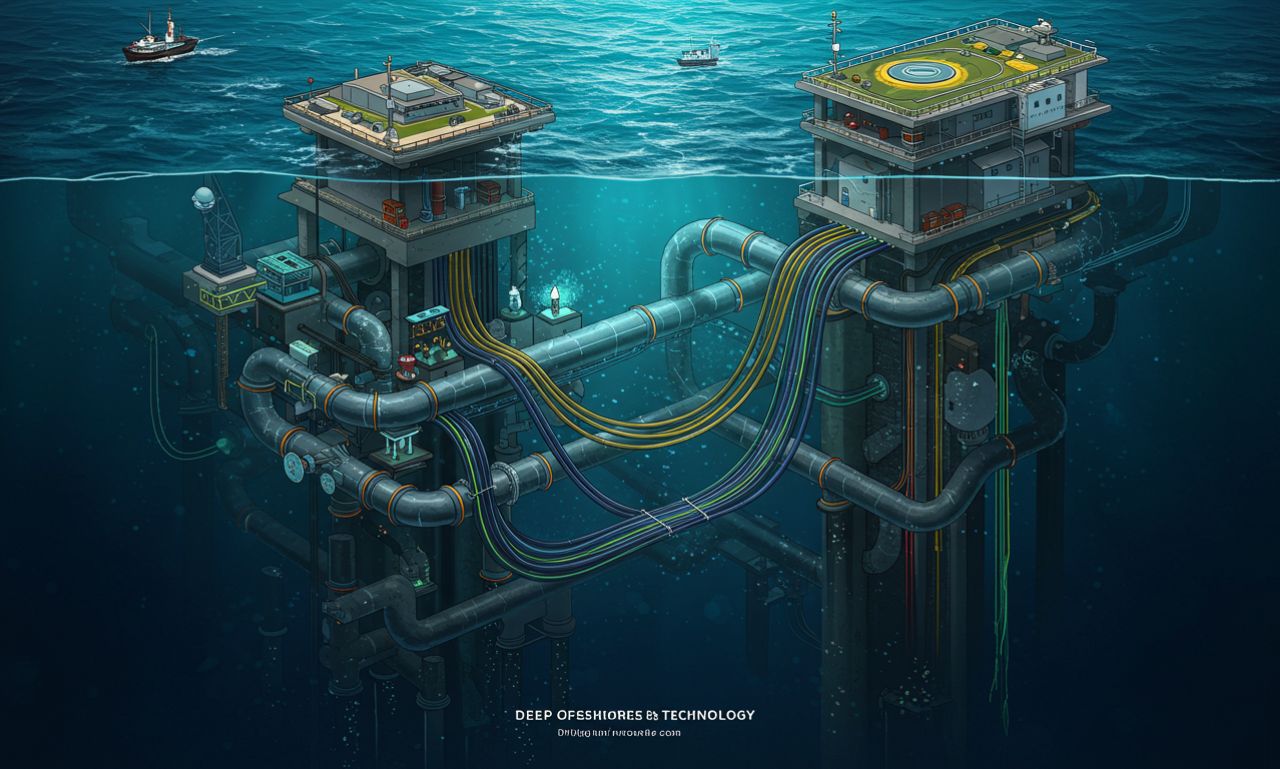Deep offshore technology represents the cutting-edge tools and systems used to explore, extract, and manage resources from the ocean’s depths. Unlike shallow-water platforms, deep offshore operations take place hundreds or even thousands of meters below the surface, where high pressure, low light, and extreme conditions challenge human ingenuity. From oil and gas exploration to renewable energy and subsea robotics, this field is driving innovations that shape global energy and sustainability.
The Evolution of Deep Offshore Technology
Decades ago, offshore activity was limited to shallow waters near coastlines. As demand for energy grew, engineers pushed boundaries into deeper waters. The introduction of floating platforms, dynamic positioning systems, and advanced subsea pipelines made what was once impossible, possible. Today, deep offshore technology has advanced so much that production facilities can operate safely in waters over 3,000 meters deep.
Core Components of Deep Offshore Technology
Deep offshore technology integrates multiple systems, including:
-
Floating Production Platforms – Semi-submersibles, FPSOs (Floating Production Storage and Offloading), and spar platforms.
-
Subsea Infrastructure – Pipelines, manifolds, and wellheads installed directly on the seabed.
-
ROVs and AUVs – Remotely operated and autonomous underwater vehicles for inspection and repair.
-
Dynamic Positioning Systems – Keeping vessels steady without anchors.
-
Digital Monitoring Tools – AI-driven data systems to track performance and safety.
Each component ensures stability, efficiency, and safety in one of Earth’s harshest environments.
Deep Offshore Technology in Oil and Gas
Oil and gas exploration remains the backbone of deep offshore technology. Drilling rigs, subsea wells, and production platforms are designed to withstand pressure, storms, and corrosion. Innovations like subsea boosting systems and tie-back pipelines reduce costs while extending the life of existing fields. This sector continues to be a driver of global energy supply.
Deep Offshore Technology in Renewable Energy
While fossil fuels dominate, deep offshore technology is also advancing renewables:
-
Floating Wind Farms – Anchored turbines generate clean energy in deep waters.
-
Wave and Tidal Systems – Harnessing the constant motion of oceans.
-
Hybrid Platforms – Combining oil, gas, and renewable systems to reduce emissions.
These projects show how deep offshore engineering contributes to sustainable energy futures.
The Role of Robotics in Deep Offshore Technology
Robotics is revolutionizing deep offshore operations. ROVs handle tasks such as welding, valve control, and inspection. AUVs perform autonomous surveys of pipelines and seabed topography. Their ability to operate at extreme depths minimizes risks for human divers while improving precision and safety.
Artificial Intelligence in Deep Offshore Technology
Artificial intelligence now plays a vital role in predictive maintenance, risk assessment, and real-time monitoring. Machine learning algorithms analyze massive datasets from subsea sensors, predicting failures before they occur. This reduces downtime and improves efficiency in expensive offshore projects.
Environmental Challenges of Deep Offshore Technology
Despite its advantages, deep offshore activity raises environmental concerns:
-
Risk of oil spills and leaks.
-
Damage to marine ecosystems from drilling and construction.
-
Carbon emissions from offshore platforms.
Addressing these challenges requires stricter regulations, advanced spill-response systems, and greener technologies.
Safety Innovations in Deep Offshore Technology
Safety is paramount in deep offshore operations. Recent advancements include:
-
Blowout preventers with real-time monitoring.
-
Emergency shutdown systems.
-
AI-driven hazard prediction models.
-
Improved diverless repair solutions using ROVs.
These innovations aim to protect both workers and the environment.
Deep Offshore Pipelines and Transport Systems
Subsea pipelines transport hydrocarbons from wells to onshore facilities. Deep offshore technology has enabled pipelines that stretch for hundreds of kilometers, using corrosion-resistant materials and advanced welding methods. The reliability of these pipelines is essential for uninterrupted energy supply.
Materials Used in Deep Offshore Technology
Extreme conditions demand specialized materials. Titanium alloys, composite structures, and high-grade steels resist corrosion and withstand high pressures. Innovations in nanomaterials and coatings further extend the life of offshore equipment.
The Future of Deep Offshore Drilling
The next generation of drilling rigs is fully automated, reducing human risk. Hybrid rigs powered by renewable energy sources are also being tested. The integration of AI, robotics, and sustainable practices marks a shift toward safer, greener, and more cost-effective offshore drilling.
Deep Off shore Technology and Climate Goals
With the world pushing toward net-zero emissions, deep off shore technology is adapting. Renewable offshore projects, carbon capture and storage (CCS), and reduced-flaring systems are helping the industry align with global climate targets.
Economic Importance of Deep Off shore Technology
This sector contributes billions of dollars annually to global economies. It creates jobs in engineering, robotics, shipping, and renewable energy. Countries with offshore resources—like Brazil, Norway, and the U.S.—rely heavily on this technology for economic growth.
Deep Offshore Technology in Developing Nations
Emerging economies are beginning to invest in offshore projects. Advances in cost efficiency and training programs allow nations with untapped offshore reserves to enter the market. This could reshape global energy distribution in the coming decades.
Education and Training in Deep Off shore Technology
Specialized programs in marine engineering, robotics, and subsea systems prepare the workforce for careers in deep off shore industries. Universities now partner with companies to provide hands-on training with simulators and ROVs.
Collaboration in Deep Off shore Technology
International collaboration is crucial. Companies, governments, and research institutions work together to share knowledge, develop standards, and improve safety. This cooperation accelerates innovation and reduces risks.
Future Trends in Deep Off shore Technology
Looking ahead, we can expect:
-
Expanded floating wind farms.
-
Increased use of AI and robotics.
-
Hybrid offshore platforms combining fossil fuels and renewables.
-
Stronger focus on sustainability and emission reduction.
Why Deep Off shore Technology Matters
Deep off shore technology matters because it connects energy demands with innovation and sustainability. It drives progress in engineering, expands renewable potential, and ensures safer operations in the harshest environments.
Conclusion
Deep offshore technology is transforming the way humanity explores and utilizes ocean resources. From powering cities to supporting climate goals, it is both a challenge and an opportunity. With the integration of robotics, AI, and renewable systems, deep off shore technology is set to define the future of global energy and sustainability.




